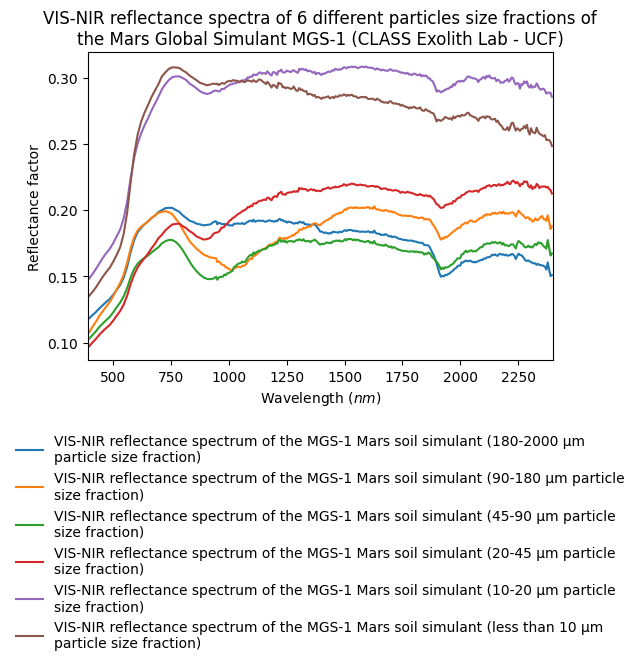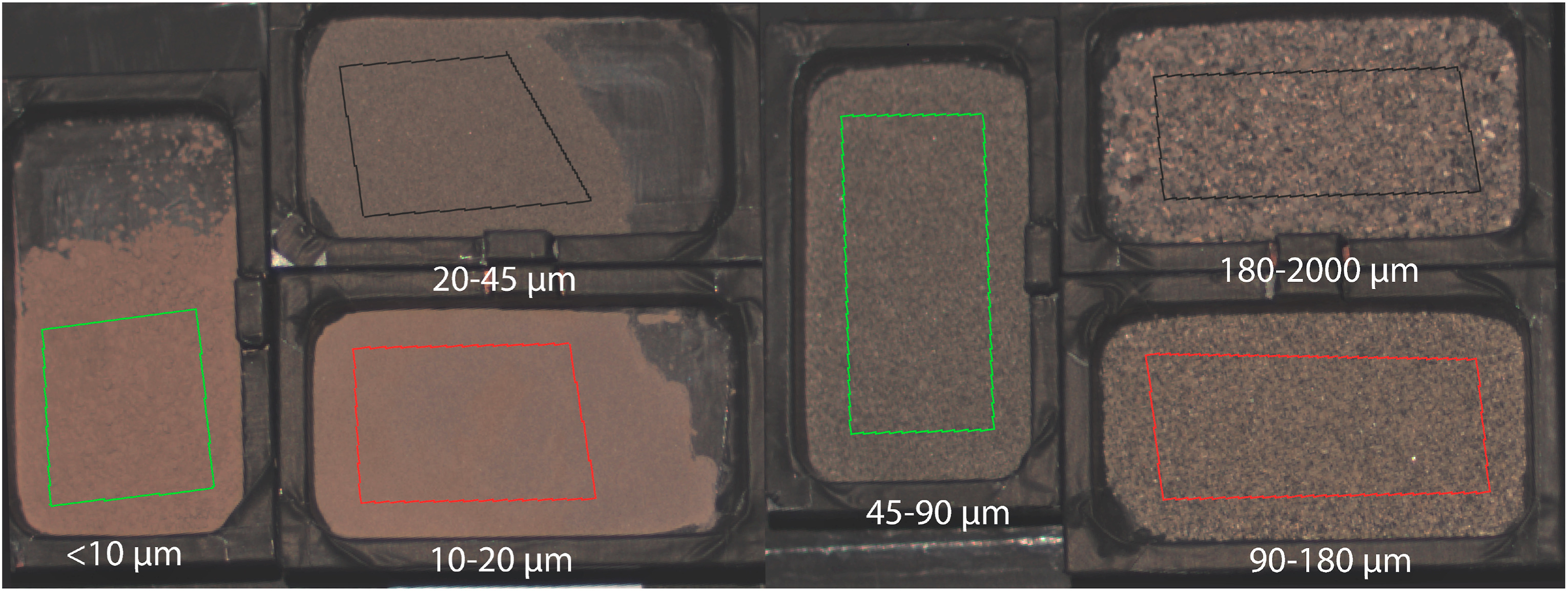- Title
- VIS-NIR reflectance spectra of 6 different particles size fractions of the Mars Global Simulant MGS-1 (CLASS Exolith Lab - UCF)
- DOI
- 10.26302/SSHADE/EXPERIMENT_LA_20201113_000
- Data reference
- Affolter, Lukas (2020): VIS-NIR reflectance spectra of 6 different particles size fractions of the Mars Global Simulant MGS-1 (CLASS Exolith Lab - UCF). SSHADE/BYPASS (OSUG Data Center). Dataset/Spectral Data. https://doi.org/10.26302/SSHADE/EXPERIMENT_LA_20201113_000
- Publications
- Database(s)
- Experimentalists
- Type(s)
- laboratory measurement
- Description
- Six different particle size fractions of the Mars regolith simulant MGS-1 were separated by dry sieving with a Varisfiter sonic separator. Their respective VIS-NIR reflectance spectra were then measured with the MoHIS hyperspectral imager.
- Number of spectra
- 6
- Variable type(s)
-
- sample grain size
- Instrument
- MoHIS - Hyperspectral imaging system Vis-NIR
- Standard medium
- vacuum
- Observation mode
- spectrum
- Spectral range type(s)
- Vis, NIR
- Valid spectral range(s)
-
Min - Max ($nm$) Sampling ($nm$) Resolution ($nm$) Position accuracy ($nm$) Absorption edge #1 390.0 - 935.0 15.0 6.5 #2 944.0 - 1298.0 6.0 6.5 #3 1304.0 - 2396.0 6.0 13.0
Definition: incidence and emergence angles are positive with origin at nadir, and vary in same direction. Azimuth origin (increasing clockwise) is for i = e (opposition geometry).
- Observation geometry
- biconical
- Observation mode
- fixed angles
- Incidence angle
- 5.0°
- Emergence angle
- 0.0°
- Azimuth angle
- 0.0°
- Phase angle
- 5.0°
- Observation mode
- roi averaged
- Date begin - end
- 2020-11-13 - 2020-11-13
Versions
- Release date
- 2023-06-16 12:37:08+0000 UTC
- Version (Date)
- #1 (2023-06-16 12:37:08+0000 UTC, Updated: 2023-06-16 12:37:08+0000 UTC)
- Sponsors
-
- Swiss National Science Fundation (SNSF)

